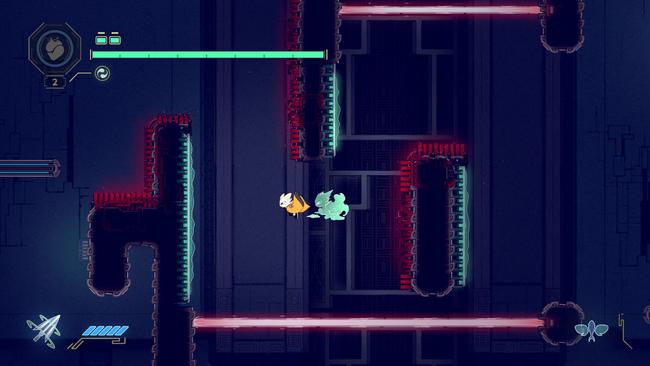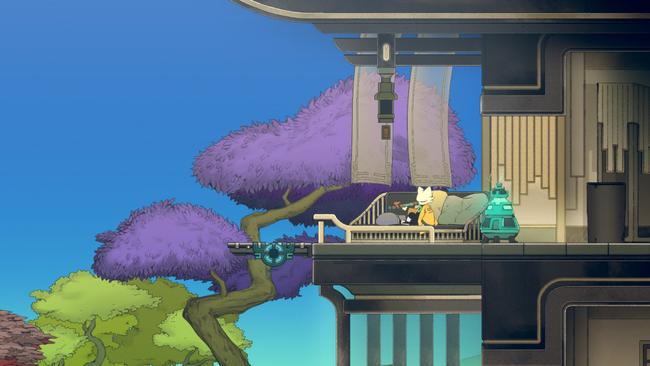
Branching Path: Nine Sols is a metroidvania primed for RPG fans
It's funny how things work out, sometimes. I'd originally picked up Nine Sols to play just for fun; I've been interested in the game since the crowdfunding campaign, and especially in the wake of Red Candle Games' situation surrounding Devotion I wanted to support the studio with their next product. I waited for the game to unlock, played about an hour, and then woke up to discover that the studio had randomly sent us a code.
Metroidvanias are a weird thing for us, especially with so many of the games in the genre borrowing elements from "Soulslike" games in the last few years. Sometimes we decide to cover them if we think they fit our wheelhouse, while other times it's trickier to gauge. I probably could've done a straight-up review for Nine Sols, the game has a level system akin to Sekiro - a game we internally figured we could've covered later down the line - which allows players to unlock different skills for main character Yi's moveset, and offers different loadouts for your talisman, bow, and passive equipment through Jade pins.

By far what might be the biggest draw to RPG fans is the game's strong story and worldbuilding, accompanied by an equally strong English translation. Nine Sols takes place in alternate future, where antropomorphic alien cats - called "Solarians" - have nearly become extinct, due to the advent of a deadly virus which has poised to wipe out their species. Faced with their backs to the wall, the best of each of the species' various clans elected a representative - a Sol - to help tackle a project which would be a last-ditch effort to save their race.
There's a lot more to the narrative than this, and a lot of it is delivered with dialogue between characters, text logs, and flashbacks that Yi has with his sister, Heng. Nine Sols' billing as a "Taopunk" game feels apt, considering the dichotomy between the incredibly gorey and violent visuals and the heartfelt story that blossoms between Yi, Shaunshaun and their companions back at the main hub players will regularly return to to exchange treasure pickups for upgrades and stop to regroup between story moments.
Nine Sols' combat is heavily inspired by Sekiro, but another - perhaps obvious - comparison would be Hollow Knight. At first things are incredibly basic, with Yi only having access to a dash, a 3 hit combo, his talisman, and a parry. Successful parries grant Yi a Qi charge, which can be expended for a Talisman that can deal heavy damage to enemies - with the default Talisman increasing in power by the number of Qi charges banked before applying one to an enemy. Both parries and Talisman uses, however, require precise timing. While sloppy parries can still be successful, if your timing isn't quite right Yi will take temporary damage that will refill over time. On the flipside, once you've applied a Talisman the default version requires you to stand in place holding down the button for a split second before detonating it. This, of course, leaves you wide open to attacks if you're not careful.

As you progress through the game, both platforming and combat opens up considerably. Yi gains access to an air dash, an air parry, and a number of other upgrades that both help make the game's movement more engaging, but also have a dramatic impact on the fight design of late-game boss fights. For example, Yi's "Unbound Counter" requires him to charge it up, making timing a bit trickier to gauge. Yet, some attacks must either be dodged, or met with this counter - as a regular parry won't be enough to mitigate the attack. This is balanced out with the addition of the Unbound Counter dealing the same temporary damage that Yi can take from a non-perfect parry to the boss, which can then be confirmed with a Talisman explosion.
The end result are brutally difficult yet tightly designed encounters that make the most out of the game's combat, and which force the player to come to grips with everything the game has to offer. Thankfully, the game does also have a Story Mode which lets you tweak the difficulty to your liking, so even if you just want to stick around for the ride Nine Sols is plenty accomodating for that, too.

Visually, Nine Sols is striking. Every area feels distinct, and regularly the game balances its beauty with the haunting imagery that the studio has been known for with their horror projects. It is worth stressing that while the game has a trigger warning for its depicted content, I'm not sure if that's enough to set expectations - while Nine Sols is a beautiful game, it's also not for the faint of heart at points. When the game eventually makes its way to consoles there's absolutely no chance it doesn't end up with an M rating.
Much like with the game's "Taopunk" aesthetic, however, it's how all these disparate elements tie together that make Nine Sols as memorable as it was. I've played a bunch of metroidvanias over the years, so when I say that Nine Sols is certainly going to be near the top of my game of the year chart I don't say that lightly. Red Candle Games' has proven that they've got the range to develop games well outside their comfort zone, and I couldn't be happier to see what's in store for them next. Don't let Nine Sols pass you by.
A game code was provided to RPG Site by the publisher.